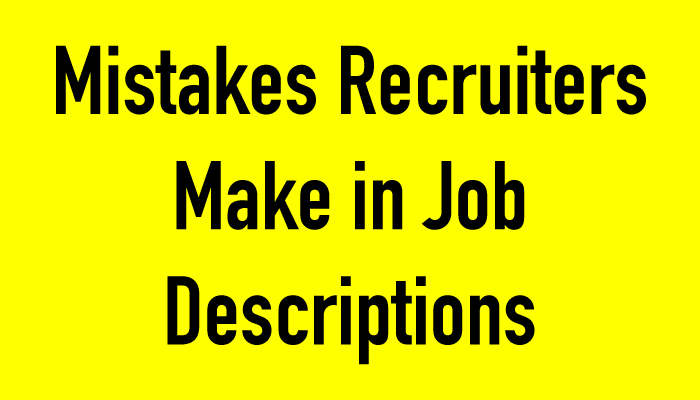
We’ve all heard about what job seekers shouldn’t be doing to scare away potential employers. But what about what employers shouldn’t be doing to scare away potential candidates? This is a question few ask, but one that deserves equal attention.
For a job seeker, all the focus is on a resume and how it could impact the decision of a recruiter. For a recruiter, however, the job description plays a similar role. Now, you must be thinking, “But how can one go wrong in writing job descriptions? It’s so self-explanatory!”
Not if you don’t want top talent to move over.
So, here are 6 common mistakes recruiters should avoid making while writing JDs:
- Legibility problems: There are two ways you can go wrong with this: having large blocks of text that are hardly scanable or using a font that requires squinting to read (due to size, color, style, etc). We understand that many job boards only give you a small text box to edit, but only means that you utilize that space correctly without trying to fit too much in what should only be a short, summary box.
- Not using keywords: The same way anyone would advise a job seeker to SEO his or her resume, it’s also important for recruiters to SEO their job descriptions accordingly. The reasoning is simple. Search engines on job boards and the web derive results based on specific keywords. So if you want your ideal candidate to look for jobs that require “customer care”, “research dissertation writers” or “analytical skills” these keywords should certainly be present in your JD as well.
- Posting the same role again: To cut the work of manually writing a job description short, many recruiters simply post the same job description that had been used for the past ten years—or more. While the position may still be the same, there is a strong possibility that position has also evolved with new roles and responsibilities having been added or transferred over to another position. Make it a habit to “clean” job descriptions every once in a while and ensure that they are up to date.
- Having either too many or too few requirements: This is another major misstep that leads to two extremes while because of the job description. Having too few or too basic requirements is going to gather an extensive list of candidates that aren’t fit for the position, or would be undesirable compared to someone with more skills. Don’t sell your organization or the position short. On the other hand, it’s also important to making your job requirements too strict. In an effort to attract only the best from the talent pool, you may also be chasing away great candidates who are equally fit for the position.
- Going overboard with the details: A surefire way to bore your potentials and drive them away is to write overly long job descriptions with verbose language and vanilla terms. For example, writing that the candidate needs to “possess the ability to work well with others” or “be able to work alone without any supervision” is unnecessary and vague. Instead be specific. For example, instead of saying they should “be able to work well with others”, specify who they will be working with, how they will be working with them, and how often.
- Not running them through other departments: A job description shouldn’t be a one man job. You may be the hiring manager assigned with the task to draft a JD, but that doesn’t mean you do it alone or without a current employee’s help. Also, make sure you have all your job descriptions checked by the HR department and clear them for compliance.
Author Bio:
Rachelle Scott is an experienced HRM working with an online company. When not working, she enjoys blogging on HRM topics and sharing influential opinions with her G+ circles